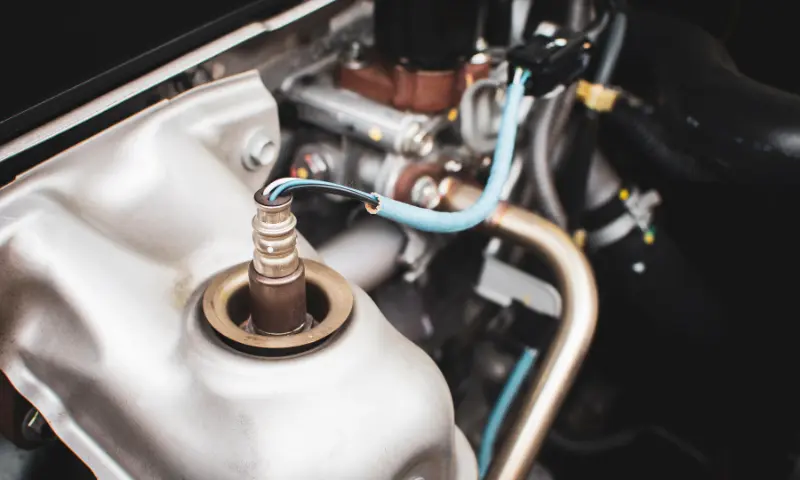A long-term fuel trim high at idle is a common issue that can affect the performance of your car engine. The overall efficiency of your vehicle is also at risk. It’s an indication that your car’s fuel system is not functioning properly. If left unaddressed, it can lead to more critical and costly problems.
In this article, I will discuss the causes of long-term fuel trim high at idle and how it can be fixed.
What is Long-Term Fuel Trim?
Before I delve into the causes and fixes, it’s essential to understand what long-term fuel trim is. A long-term fuel trim (LTFT) is a value that represents the adjustment made by the engine control unit (ECU) to maintain the ideal air-fuel ratio.
The LTFT can be positive or negative, indicating the amount of fuel added or removed from the system. When the LTFT is high, it means that the ECU has added a considerable amount of fuel to maintain the ideal air-fuel ratio.
The normal fuel trim for a vehicle engine is calculated by adding together the values of the long-term fuel trim and short-term fuel trim. Under normal operations conditions, the average value of LTFT or STFT should be less than or equal to 10. Anything above this value means that there’s an issue with the oxygen sensor or the engine.
Causes of Long-Term Fuel Trim High At Idle
Excessive vacuum Leaks
One of the most common reasons your car engine may experience long-term fuel trim high at idle is the presence of vacuum leaks. These leaks allow excess air to enter the engine, causing the ECU to add more fuel to maintain the air-fuel ratio. Vacuum leaks can occur due to a cracked or disconnected vacuum hose or a faulty intake manifold gasket.
Bad Oxygen Sensor

The oxygen sensor is responsible for detecting the oxygen content in the exhaust gas and sending a signal to the ECU to adjust the air-fuel ratio. A failing oxygen sensor can send inaccurate signals, causing the ECU to add more fuel than necessary, resulting in a high LTFT.
Clogged Fuel Injectors
A clogged or dirty fuel injector cannot work optimally. Thus, it’ll not be able to produce the right amount of fuel for the engine. As a result, this will cause the ECU to compensate by adding more fuel. The far-reaching consequence is a high LTFT at idle.
Malfunctioning Mass Airflow Sensor
The mass airflow sensor (MAF) is responsible for measuring the amount of air entering the engine and sending a signal to the ECU to adjust the air-fuel ratio. A malfunctioning MAF can send inaccurate signals, causing the ECU to add more fuel than necessary, resulting in a high LTFT.
How to Fix Long-Term Fuel Trim High At Idle
Fixing a common issue like long-term fuel trim high at idle isn’t rocket science. You won’t need to break the bank either. A Simple DIY procedure can help you resolve the issue in no time and at a low cost. Here are four common techniques to fix a long-term fuel trim high at idle:
Check for Vacuum Leaks
The first step in fixing a high LTFT is to check for vacuum leaks. You can do this by inspecting the vacuum hoses and the intake manifold gasket for cracks or leaks. If you find any leaks, you can replace the affected parts.
Check the Oxygen Sensor

If the oxygen sensor is defective, you need to replace it. You can test the oxygen sensor using an OBD2 scanner to check if it’s sending accurate signals to the ECU. If the signals are inaccurate, replace the sensor.
Clean or Replace Fuel Injectors
You need to clean any clog, dirt, debris or gunk present in your vehicle’s fuel injectors. With a fuel injector cleaner, you can follow a simple cleaning procedure to get rid of the dirt deposit. If the cleaning doesn’t work, you may need to replace the fuel injectors.
Inspect the Mass Airflow Sensor
You can test the Mass airflow sensor (MAF) using an OBD2 scanner. You’ll need to check if the MAF is sending accurate signals to the ECU. If the signals are inaccurate, replace the sensor.
Reset the ECU

After making any repairs or replacements, you need to reset the ECU to clear any error codes and allow the ECU to relearn the new values. You can do this by disconnecting the battery for about 10 minutes or using an OBD2 scanner to reset the ECU.
FAQs
What are positive and negative LTFT?
Long-term fuel trim can come in positive and negative values. Each of the value types of LTFT is caused by certain factors. Likewise, their fixes depend on what reasons are responsible for the positive and negative values.
When the combustion is leaner than what the PCM or ECM projects, your engine produces positive long-term fuel trim. Positive LTFT value can occur as a result of a couple of things. A faulty fuel pump which causes low volume or pressure generation is a major cause. Air leaks in the PCV system or a defective exhaust valve that allows unburned air to get to the exhaust are also a culprit. Other reasons include bad oxygen sensors, ignition misfires, or air or vacuum leaks.
On the other hand, the negative LTFT value occurs when combustion is richer than the PCM or ECM predicts. Rich combustion is caused by a bad oxygen sensor, leaky fuel injector, clogged air intake system, or failing fuel pressure control. A chattering fuel injector can also be responsible.
Final Consideration
Your vehicle’s powertrain control module (PCM) is designed to ensure a balance in the air-fuel ratio. To do this, however, the PCM needs to adjust the fuel mixture as it monitors the fuel-air ratio through the oxygen sensors. A long-term fuel trims high at idle is an indication of a problem with your car’s fuel system.



